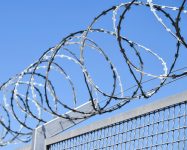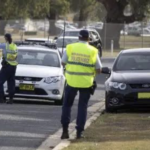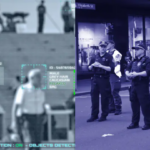Australia Will Finally Ratify Law Against Torture

A group of up to 20 teenagers, who are being held in the Grevillea Unit of Victoria’s Barwon prison, rioted on Monday night. The youths have been placed in the unit of the adult prison due to the rioting that’s been occurring in the state’s youth justice centres over the last year.
The Victorian Supreme Court ruled the incarceration of the youths in the adult prison system unlawful in December last year. While a 2013 Victorian Ombudsman report said there “are no circumstances that justify the placement of a child in the adult prison system.”
The problems with Australia’s youth justice system are well-known. They came to national attention in July last year when it was reported that children at Darwin’s Don Dale youth detention centre were being systematically tortured and tear-gassed.
Teenage detainees have been subjected to the use of excessive force and prolonged isolation in Queensland’s Cleveland youth detention centre. And Tasmania’s Ashley youth facility has come under scrutiny for a “series of incidents” perpetrated upon teenagers by youth justice officers.
Systemic problems in Australia’s places of detention
However, it’s not only the treatment of detainees in the nation’s youth justice system that’s questionable, there are issues in all of Australia’s places of detention.
The adult prison system is bursting at the seams. Overcrowding is leading to increased tensions among inmates and leading to violent conflicts. The NSW prison system has seen an increase in detainees committing self-harm, with 1,617 incidents over the two years ending 2015.
And further to our nation’s shame Aboriginal deaths in custody continue.
The mistreatment leading to the death of Ms Dhu in WA’s South Hedland police lock-up is common knowledge. While Rebecca Maher died in a police cell in NSW in August last year, after police picked her up due to reports that she was intoxicated.
And there are accounts of numerous “use of force” incidents being meted out upon vulnerable asylum seekers in Australia’s onshore detention centres.
Australia to ratify the OPCAT treaty
So many breathed a sigh of relief, when Australian attorney-general George Brandis announced at a DFAT-NGO forum on human rights last Thursday that Australia would finally be ratifying the Optional Protocol to the Convention Against Torture, commonly known as the OPCAT treaty.
The international treaty provides additional protocols built upon the 1984 UN Convention Against Torture, which specifically aim to strengthen the protection of people being held in places of detention.
The ratification of the treaty has been a long time coming. Australia signed OPCAT in 2009, and there’s been three prime ministers since that have neglected to ratify the protocol.
This is despite continued pressure to do so from the Australian Human Rights Commission and non-government organisations. As well as, a 2015 United Nations review of Australia’s human rights record, which led to 27 countries recommending that Australia implement OPCAT.
The attorney-general said the Turnbull government will ratify the treaty by December this year, which means that the protocols will be established within the following twelve months in accordance with the treaty guidelines.
Mr Brandis outlined that the focus will be on “primary places of detention, such as prisons, juvenile detention, police cells and immigration facilities.”
How OPCAT will work
Once Australia has ratified the treaty, it’s obligated to establish a National Preventive Mechanism (NPM). The NPM will be a network of independent bodies that will monitor and inspect the nation’s places of detention.
These inspectorates will be responsible for making random unannounced visits to detention facilities and making recommendations to relevant authorities. As well as the visits, the NPM will conduct confidential interviews with child detainees and review laws and practices.
Senator Brandis said at last Thursday’s meeting that the Office of the Commonwealth Ombudsman will be charged with coordinating the inspecting bodies. However, the inspectorates will remain independent, and “the ombudsman will not have authority over” them.
In February 2007, the Subcommittee on Prevention of Torture (SPT), which is comprised of 25 independent experts, was established. The SPT’s mandate is to visit all places of detention in countries that have ratified the treaty, and make its own recommendations.
Mr Brandis said during his speech that Australia’s NPM will cooperate and coordinate with the UN subcommittee and that the nation will “welcome visits” from the SPT.
The OPCAT inspection system is modelled on the Committee for the Prevention of Torture, which is a European system for inspecting places of detention that was established in 1987.
What the treaty could mean for Australian detainees
The NPM is designed to protect detainees’ basic human rights. The inspections of places of detention are not only intended to identify poor conditions and cases of mistreatment, but they’re also meant to determine misguided policies and practices that are behind these transgressions.
Recommendations can then be made to change the existing operating systems within these places of detention in order to improve the livelihood of people held within these facilities.
In the case of Aboriginal deaths in custody, it might be hoped that with the increased focus upon Australia’s system of detention, there will be renewed appraisal of the 339 recommendations made by the royal commission in 1991, as most of these have never been implemented.
However, the OPCAT treaty brings no hope for the refugees being held at Australia’s offshore detention centres on Manus Island and Nauru for the more than three years now. The Australian ratification doesn’t affect those facilities.
Papua New Guinea is not a party to the treaty. And while Nauru has ratified it, the nation hasn’t established its NPM.
Although, it’s still up to the government to come clean
But, as Australia’s Human Rights Commissioner Edward Santow pointed out in the Guardian the OPCAT system will have “a positive impact only if Australian governments” are willing to recognise that there are problems within these facilities and they implement the changes to solve them.
This might be a big ask. OPCAT doesn’t require that governments make recommendations and observations made about their places of detention publicly available, as reports are communicated confidentially to the state.
And given the government’s lack of transparency over the deplorable conditions found in its offshore detention facilities, the Australian public might be waiting a long time for the government to openly share any negative findings about the state of its places of detention.







